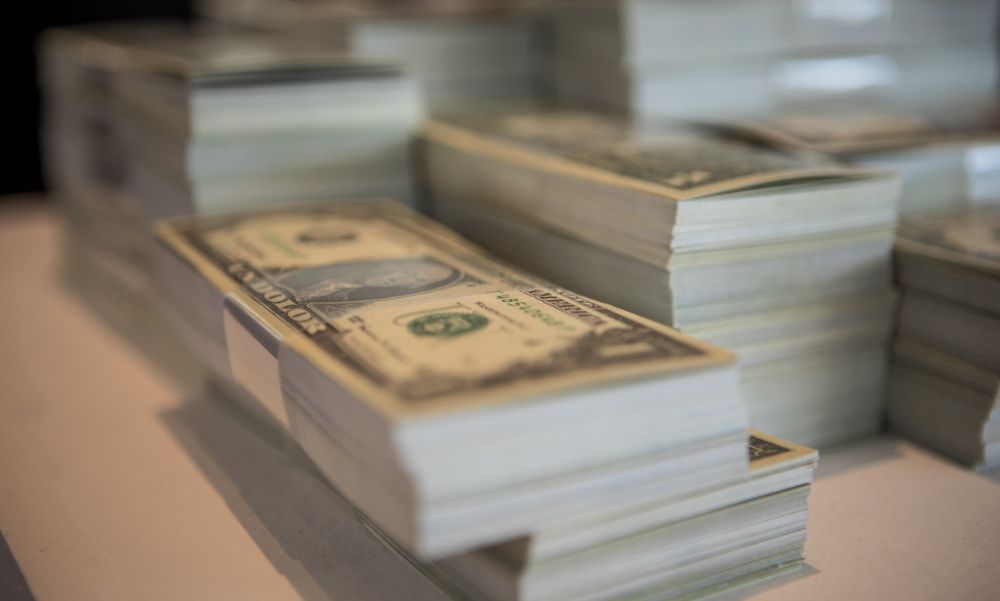THE FUTURE BEHIND
Political imagination after the 2001 outbreak
08.12.23 - 02.04.24
Fotografías: Lina M. Etchesuri
When it comes to the historical events related to the popular riots of December 19 and 20, 2001, a major contradiction arises: in the midst of an abysmal economic crisis, the most outstanding social creativity is unleashed.
It was during the course of a decade of state dismantling in which jobs were privatized and closed down all over the country that unemployed movements, assemblies and soup kitchens in the heat of bonfires, and roadblocks sprang up.
The response of the government was fiercely repressive: it decreed a state of siege, which resulted in 39 deaths and hundreds of injured people. In response, the protests multiplied, chanting for solidarity: “Piquete y cacerola, la lucha es una sola” [Picket and pan, the struggle is only one].
In a sequence that began with Fernando De La Rúa fleeing by helicopter, five presidents passed through the Casa Rosada in just eleven days. The people multiplied the protests, organizing and marching massively, and in the main urban centers there were popular assemblies that established an unprecedented exercise of direct and participative democracy.
An image that sums up this social feeling was that of those families who decided to take a summer vacation at their bank branch with deck chairs and sunscreen, in a spontaneous and desperate performance to call public attention to the banks’ capturing of their savings. This source of social creativity also spread to worker recovered enterprises, barter clubs and multiple experiences that came up with solidarity-based forms of exchange and cooperation, giving rise to protest repertoires deployed by social movements, artists and cultural collectives that occupied the public space.
In the time scale of history, a span of just two decades may seem fleeting. Today, a new crisis is once again sweeping the country and like an inverted rewriting—it is hard to imagine a greater contrast between the 2001 outbreak and the current situation.
This exhibition seeks to shake the present by resorting to that laboratory of political, economic, cultural, artistic, and emotional experimentation that enabled alternative ways of life in the midst of that vertiginous and vibrant context. If anything encourages this project, it is the ambition that this bursting past, with its precarious gleams and disruptive powers, may contribute to opening new forms of action in the present and gaps in the future, to glimpse possibilities of life in common, summoning up with dignified rage the complex memory of that fragile but also moving beauty.
The future behind. Political imagination after the 2001 outbreak is a project produced by the Parque de la Memoria, who depends from the Subsecretaría de Derechos Humanos y Pluralismo Cultural del GCBA. Is part of the results of “Después del estallido” (Convocatoria CONICET/Museos), research carried out by the group “Arte, Cultura y Política en la Argentina reciente” (IIGG FSOC-UBA) together with the Museo Histórico Nacional.


Curaduría general:
Nicolás Cuello / Marilé Di Filippo / Cecilia Iida / Ana Longoni / Ramiro Manduca / Magdalena Pérez Balbi / Alejandro Thornton
Curaduría fotográfica y audiovisual:
Cora Gamarnik / Maximiliano de la Puente / Guillermo Sánchez
Investigadores colaboradores:
Lucía Cañada / Santiago Mazzuchini
Alejandro Thornton
Alejo Hoijman
Alex Portugheis
Alicia Herrero
Ana Maldonado
Archivo de la Memoria Trans
Arde Arte
Arte por Libertad, Arte y Confección: semana cultural por Brukman
Avi Lewis y Naomi Klein
Carla Thompson
Ceramicazo – Semana de Zanón en Plaza Congreso
Colectivo Boedo Films + Contraimagen + Kino Nuestra Lucha
Colectivo Potlach
Costuras Urbanas
Cristina Piffer y Hugo Vidal
Cristina Schiavi
Damián Finvard
El Barrio TV
En Movimiento TV
Movimiento Popular la Dignidad
El Hormigazo
Emiliana Miguelez
Enrique García Medina
Etcétera…
FaSinPat (Fábrica sin Patrones – Cerámicas Zanón)
Flor Vespignani
Gala Abramovich y Dan Damelio
Grupo de Arte Callejero Periferia
GAC
Grupo La Grieta
Grupo Trasmargen
Gustavo Larsen
Gustavo Laskier
HIJOS La Plata
Iconoclasistas
Javier del Olmo
Javier Gramuglia
Jorge Gustavo Torres (Maka)
Karina Granieri
Lucía Merle
María Causa
Mariano Espinosa
Mariela Scafati
Martín Lucesole
Maximiliano Kosteki
Maxie Amena y Verónica Iglesias
Nicolás Pousthomis
Pablo Ares y Juan Martín Biderman
Pablo Piovano
Partido Transportista de Votantes (PTV)
Patricio Escobar
Pepe Mateos
Pobres Diablos
Proyecto Venus
Sergio Goya
Silvia Hernández
Taller Popular de Serigrafía
Tony Valdez
Trabajadoras de Brukman
Victoria Gesualdi
Yomango
Zucoa Noes











